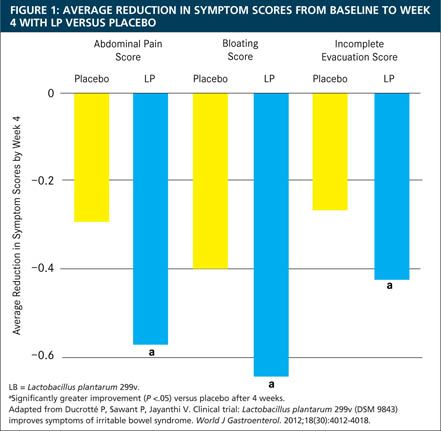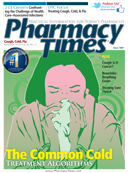Publication
Article
Pharmacy Times
Probiotics: Understanding Benefits and Recommendations for Use as a Supplement
This article was sponsored by Pharmavite.
Probiotics, according to the World Health Organization, are live microorganisms that when administered in adequate amounts confer a health benefit on the host.1 Several different strains of probiotics are available, and each has a specific effect on the body.2-4 Consumers, who may have learned about probiotics through television advertisements, may not be aware of the various probiotic formulations available as OTC supplements or understand their effects. As health educators, pharmacists play an important role by explaining the benefits of probiotics in appropriate patients and stressing the importance of choosing a supplement that will deliver the correct type and amount of healthy bacteria to the intestine.1,5 Pharmacists can also help ensure that consumers use probiotic supplements according to the label.
About Probiotics
An imbalance of the microbiome in the gastrointestinal (GI) system can result from external factors such as diet, age, medication use, and illness.6 Probiotics are thought to assist the naturally occurring gut microbiota in the body by increasing the number of beneficial bacteria in the intestines.5 Modulation of gut microbial populations through use of probiotics helps support a healthy balance of microflora, which is associated with healthy gut function and immune system wellness.5,6 World Gastroenterology Organization (WGO) guidelines support the use of probiotics for alleviation of mild GI-related symptoms.5 The WGO specifies that a probiotic product must meet the following criteria5:
- Specified by genus and strain
- Alive
- Delivered in adequate dose through the end of the product shelf life
- Shown to be efficacious in human studies
- Safe for the intended use
Health Benefits
Much of the research in probiotics has focused on supporting intestinal health and function.5 A double-blind, placebo-controlled study examined the beneficial effects of daily use of Lactobacillus plantarum 299v in patients with irritable bowel syndrome.7 In the study, published in The World Journal of Gastroenterology, 214 patients were randomized to receive either a probiotic capsule (n = 108) or a placebo (n = 106) for a period of 4 weeks.7 Investigators evaluated a primary end point of changes in abdominal pain episodes, and secondary end points of abdominal pain severity, the frequency and severity of abdominal bloating, and incomplete rectal emptying.7 After 4 weeks of treatment, the mean frequency of abdominal pain was reduced by 51.9% in the L plantarum 299v group versus a 13.6% reduction in the placebo group (P <.05). As shown in Figure 1, investigators found that treatment with L plantarum 299v was also associated with significant reductions in symptoms for abdominal pain, bloating, and incomplete rectal emptying (P <.05 compared with baseline evaluations).7

After 4 weeks of treatment, among patients receiving the probiotic, 78.1% rated the product efficacy in reducing symptoms as good to excellent, versus 8.1 % of patients receiving placebo (P <.01).7 No significant side effects were reported in the study groups.7
Probiotic Delivery
Probiotic supplement selection should take into account the bacterial strain, the dosing, and the type of delivery system of each product. Subtle differences in the type and amount of probiotic organisms administered can impact the effects of such organisms in the human body. Even within the same species of probiotic organism, different strains may have different effects. For instance, Lactobacillus rhamnosus strain GG has different effects on the GI tract than other strains within the same bacterial species.4,5,8 The amount administered is also an important consideration, as inadequate dosing may not have the desired effect.1,5 Doses of probiotic bacteria are measured in colony-forming units (CFUs), or the number of living bacteria that form into active colonies when cultured.9 The generally accepted daily dosages of probiotics falls in the range of 107 to 109 CFUs, although the necessary dosage may vary among individuals.9
The effects associated with probiotics are also dependent on the dosage form and the physiologic conditions in the body. For instance, experts note the importance of achieving an adequate dose of probiotics in the small bowel, thus ensuring that probiotic formulations survive the low-pH conditions of the stomach and reach the site of action (ie, the intestines).9 Probiotics are sometimes formulated with an enteric or similar type of coating which can help the live microorganisms reach the small intestine.10
Earlier studies in probiotic delivery demonstrated that both food and enteric-coated tablets are good carriers of the probiotic L rhamnosus GG.11 By contrast, a separate investigation with L plantarum found that consumption of the organism in a dried powder led to less delivery of bacteria to the GI tract than did consumption of the same powder in food.12 Based on this experience with L rhamnosus GG and L plantarum, probiotic delivery to the gut through food or an enteric-coated tablet is preferable in terms of the amount of probiotic reaching the site of action.10
Role of the Pharmacist
When counseling patients on the use of probiotics, it is important to determine the reason for their interest, to understand their treatment goals, and to educate them regarding the unique properties of applicable probiotic strains. Pharmacists should help appropriate patients select a product that contains probiotic bacterial strains that have been shown to be effective in supporting GI function and/or providing other health benefits in a formulation designed to reach the site of action.
Patients should also be advised to follow the recommended dosing on the product label. Any patients who are taking an immunosuppressive medication or who have a serious underlying health condition should be referred to their primary care physician prior to taking any probiotic product.13-15
References:
- Food and Agriculture Organization of the United Nations and World Health Organization. Health and Nutritional Properties of Probiotics in Food including Powder Milk with Live Lactic Acid Bacteria. http://www.who.int/foodsafety/publications/fs_management/en/probiotics.pdf. Published October 2001. Accessed August 2014.
- Hickson M. Probiotics in the prevention of antibiotic-associated diarrhoea and Clostridium difficile infection. Therap Adv Gastroenterol. 2011;4(3):185-197.
- Jacobsen CN, Rosenfeldt Nielsen V, Hayford AE, et al. Screening of probiotic activities of forty-seven strains of Lactobacillus spp. by in vitro techniques and evaluation of the colonization ability of five selected strains in humans. Appl Environ Microbiol. 1999;65(11):4949-4956.
- McFarland LV. Systematic review and meta-analysis of Saccharomyces boulardii in adult patients. World J Gastroenterol. 2010;16(18):2202-2222.
- Guarner F, Khan AG, Garisch J, et al. World gastroenterology organisation global guidelines: probiotics and prebiotics, October 2011. J Clin Gastroenterol. 2012;46(6):468-481.
- Bäckhed F, Fraser CM, Ringel Y, et al. Defining a healthy human gut microbiome: current concepts, future directions, and clinical applications. Cell Host Microbe. 2012;12(5):611-622.
- Ducrotté P, Sawant P, Jayanthi V. Clinical trial: Lactobacillus plantarum 299v (DSM 9843) improves symptoms of irritable bowel syndrome. World J Gastroenterol. 2012;18(30):4012-4018.
- Gross G, Snel J, Boekhorst J, Smits MA, Kleerebezem M. Biodiversity of mannose-specific adhesion in Lactobacillus plantarum revisited: strain-specific domain composition of the mannose-adhesin. Benef Microbes. 2010;1(1):61-66.
- Bertazzoni E, Donelli G, Midtvedt T, Nicoli J, Sanz Y. Probiotics and clinical effects: is the number what counts? J Chemother. 2013;25(4):193-212.
- Sanders ME, Klaenhammer TR, Ouwehand AC, et al. Effects of genetic, processing, or product formulation changes on efficacy and safety of probiotics. Ann N Y Acad Sci. 2014;1309:1-18.
- Saxelin M, Ahokas M, Salminen S. Dose response on the faecal colonisation of Lactobacillus strain GG administered in two different formulations. Microbial Ecology in Healthcare and Disease. 1993;6:119-122.
- Klingberg TD, Budde BB. The survival and persistence in the human gastrointestinal tract of five potential probiotic lactobacilli consumed as freeze-dried cultures or as probiotic sausage. Int J Food Microbiol.2006;109(1-2):157-159.
- Hempel S, Newberry S, Ruelaz A, et al. Safety of probiotics used to reduce risk and prevent or treat disease. Evid Rep Technol Assess. 2011;(200):1-645.
- Liong MT. Safety of probiotics: translocation and infection. Nutr Rev. 2008;66(4):192-202.
- Cannon JP, Lee TA, Bolanos JT, Danziger LH. Pathogenic relevance of Lactobacillus: a retrospective review of over 200 cases. Eur J Clin Microbiol Infect Dis. 2005;24(1):31-40.







